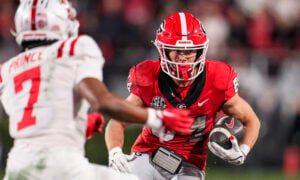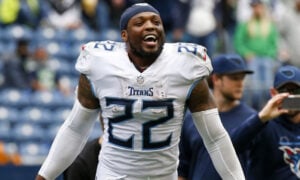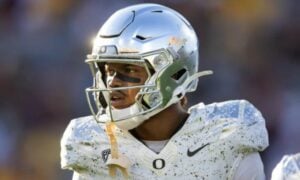Dynasty Trading Post: February 2020
Welcome back to the Dynasty Trading Post, formerly a quarterly column here at Dynasty League Football, which we’ll be bringing to our subscribers on a much more frequent basis. This column is intended to track which players or assets are significantly increasing or decreasing in value, allowing our readers to adjust their sights and values accordingly.
We will also feature many of the trading and player evaluation tools we offer at DLF.
The NFL season drew to a close on February 2nd with one of the more exciting and well-fought Super Bowls in recent memory. Now, just when you thought any semblance of football was over until the NFL Combine, we have another two months of football to enjoy with the rejuvenation of the XFL.
While many of us are still feeling out the concept and vision that this new league brings, DLF remains committed to bringing you the swings in player valuation occurring in the NFL. This column will, for the most part, remain relatively the same as it has over the past two seasons. However, look for more integration with the player evaluation tools provided to our subscribers.
Let’s kick it off like we normally do with an overview of the most – and least – popular assets as collected by the Dynasty Trade Finder.
JuJu, Part Two
Just as when we last saw this article in December, JuJu Smith-Schuster is once again the most traded asset in dynasty football leagues. Over the past 30 days he has been involved in 38 separate trades tracked by the Dynasty Trade Finder.
Normally we would have to extrapolate whether his value is increasing or decreasing based external news, e.g., an off-field issue, trade speculation, recent injuries – the list of ways his value could be affected is numerous.
However, quantifying those external factors into a usable measure of value change has been more of an art than anything . . . until now. With DLF’s recent acquisition of FFstatistics.com, we have a tool to do just that.
According to the Change In Player Value tool, since we last talked about Smith-Schuster in December of 2019, his value has dropped 30 points. The tool incorporates ADP and player rank to present a much clearer picture of value and how that can play into dynasty trades. With the data available to us in this tool, lets find an off-setting corresponding player and look for any trades involving the two players.

The closest wide receiver who rose in value in a similar fashion to how Smith-Schuster dropped in value is Chris Godwin, who rose in value 32 points which is about as close as we can get.
As luck would have it, we had a trade involving the two players within the specified window (December 2019 to present), and the two players were on opposite sides of the trade.

Perfect! Just for an idea as to who saw the most benefit from this particular trade lets plug each side into the Dynasty Trade Analyzer. Doing so presents us with the following valuation

Good job to both sides, truly! They must be DLF subscribers given how close they got this trade in value.
Now for some added context, think how different this same trade would have looked in December where Smith-Schuster’s value was 30 points higher and Godwin’s was 32 points lower. The “winner” of this trade would have flipped with Team A’s total being 1,013.2 points and Team B’s value being 960.1, and that is if everything else in the trade remained static, but of course that doesn’t happen.
Plugging the other players into the Change In Player Value tool shows that Brandin Cooks’ value decreased by 113 points and Mike Gesicki’s value increased by 22 points. Meanwhile, Mike William’s value dropped by 11 points. Adding all these changes together shows the trade value for Team A in December would have been 1,104.2 points while Team B’s value at that point would have been 971.1.
What are we to draw from this information?
Well, it clearly shows that valuations in dynasty are nearly as fluid as water, but it also shows that Team A clearly felt the decrease in valuation of the team’s assets necessitated a move to shore up the team. The assets that team obtained saw a fluctuation in value of just 21 points while the assets that were being traded away fluctuated by a whopping 121 points, a one hundred-point difference in value.
That said, as I stated, dynasty values are like water, and what does water do constantly? Ebb and flow. As such, Team B might have seen the opportunity to pick up a few assets whose values were lower than they have been in some time, with the hopes that in another few months those values would once again return to where they were. Of course, only time will tell who won this trade but given this specific snapshot in time, both sides came to an incredibly fair trade.
With this column becoming a more regular feature on DLF, look for it to feature one or two players per installment as we examine how player values can be determined using the industry-leading tools available to our readers. I will continue to look for examples of value fluidity and hope to show just how important timing is in coming up with trades that are equitable for both sides. Until next time, get out there and improve your teams!
As of this edition of the series, the Dynasty Trade Finder has recorded 272,996 trades that have occurred over 4,801 dynasty leagues, making it the premiere trade database in the dynasty fantasy football market. Make sure you check it out today by clicking here.


































































